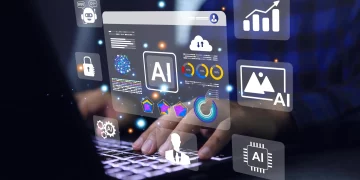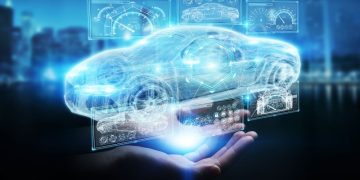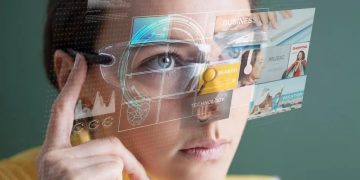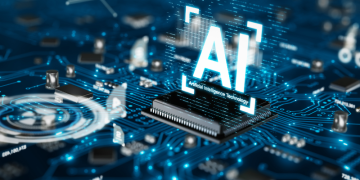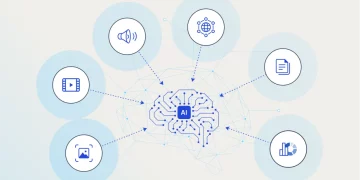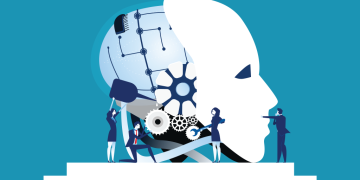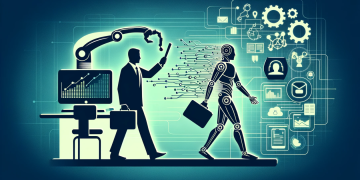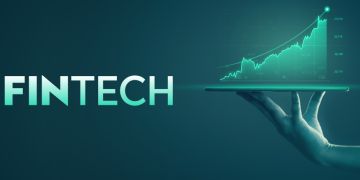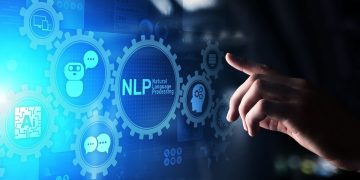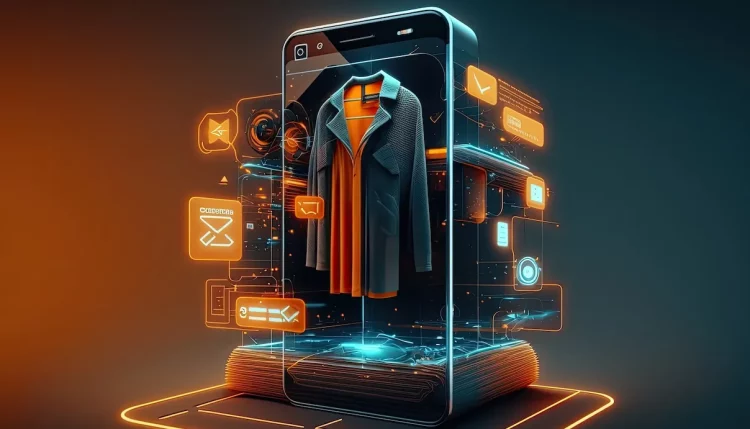Introduction
Artificial Intelligence (AI) is increasingly becoming a pivotal force in the retail industry, shaping everything from customer experience to supply chain management. As the digital landscape continues to evolve, AI’s capabilities in data analytics, personalization, automation, and predictive modeling are giving retailers new tools to improve operational efficiency, drive sales, and enhance customer satisfaction. But the question remains: are these innovations unique to retail, or can these successes be translated into other industries?
This article explores the revolutionary impact of AI on retail, highlighting real-world examples that have driven change and innovation. We will also explore whether the same strategies can be applied to other sectors like healthcare, finance, and manufacturing, making the case for AI’s universal adaptability across industries.
1. AI’s Role in Retail: Key Transformations
1.1 Personalization: Tailoring Customer Experiences
One of AI’s most significant contributions to retail is personalization. By leveraging customer data, AI enables retailers to create highly personalized shopping experiences, both online and in physical stores.
- AI-Powered Recommendations: Online platforms like Amazon and Netflix use AI algorithms to suggest products and services based on previous user behavior, preferences, and even social media interactions.
- Dynamic Pricing: AI helps retailers dynamically adjust prices in real-time, considering factors like demand, seasonality, and competitor pricing, optimizing both revenue and customer satisfaction.
Example:
- Sephora: The cosmetics giant uses AI-powered virtual assistants, like Sephora Virtual Artist, to recommend makeup products based on a customer’s unique facial features and preferences. This personalized service enhances the customer experience, leading to higher conversion rates and brand loyalty.
1.2 Inventory Management and Predictive Analytics
AI’s ability to analyze vast amounts of data in real-time allows retailers to optimize inventory management and ensure that products are available at the right time and place, reducing waste and improving supply chain efficiency.
- Demand Forecasting: AI models predict demand for specific products at certain times, ensuring that inventory is stocked optimally.
- Automated Replenishment: AI-powered systems automatically reorder products based on inventory levels, historical sales data, and real-time trends.
Example:
- Walmart: The retail giant uses AI to forecast demand more accurately, preventing stockouts and overstocking. Its AI-driven inventory system helps ensure that customers can find the products they want while minimizing excess inventory.
1.3 Chatbots and Virtual Assistants for Customer Service
Customer service in retail is often a time-consuming and repetitive task. AI chatbots and virtual assistants are helping retailers streamline customer interactions, providing 24/7 support and quick solutions to common problems.
- AI Chatbots: These are designed to handle customer inquiries, guide users through the purchasing process, and resolve common complaints without human intervention.
- Virtual Shopping Assistants: AI tools guide customers through the shopping experience, offering suggestions, answering questions, and assisting with checkout.
Example:
- H&M: The Swedish fashion retailer uses AI-powered virtual assistants on its website and in stores, helping customers find the right sizes, recommend new styles based on preferences, and even provide styling tips.
1.4 AI-Driven Marketing and Advertising
AI has revolutionized retail marketing, enabling businesses to run more effective targeted marketing campaigns. AI analyzes customer data to help retailers understand purchasing behavior, making it possible to send personalized offers and advertisements to specific customer segments.
- Programmatic Advertising: AI optimizes advertising spend by automatically adjusting ads based on real-time performance, ensuring that campaigns reach the right audience at the right time.
- Predictive Analytics: AI predicts future buying behavior and sends personalized recommendations or offers to potential customers.
Example:
- Macy’s: The department store uses AI to run personalized marketing campaigns that target specific customer groups, based on purchase history and browsing behavior. By tailoring offers, Macy’s has seen a noticeable improvement in conversion rates and customer engagement.
2. Can These AI Success Stories Be Replicated in Other Industries?
2.1 Healthcare: Personalization and Predictive Analytics
The healthcare industry stands to benefit enormously from the lessons learned in retail. In particular, AI’s personalization and predictive analytics capabilities can transform patient care and operational efficiency.
- Personalized Treatment Plans: Just as AI tailors shopping experiences, it can be used to create personalized treatment plans for patients based on their unique medical histories and genetic data.
- Predictive Analytics for Healthcare: AI can predict patient outcomes and optimize resource allocation in hospitals, similar to how retailers predict demand.
Example:
- IBM Watson Health: Watson uses AI to analyze patient data and suggest personalized treatment options. Its ability to analyze vast datasets makes it a powerful tool for diagnosing conditions early and optimizing treatment strategies.
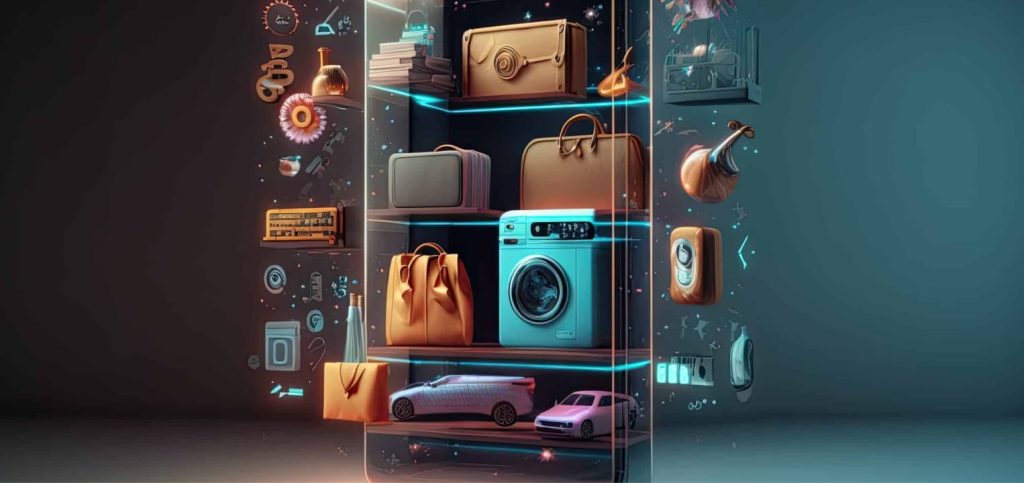
2.2 Financial Services: Risk Management and Customer Service
AI in financial services can be applied in a similar way to retail, particularly in areas like fraud detection, customer service, and personalized financial planning.
- Fraud Detection: Like AI-driven inventory management in retail, AI can monitor transactions in real-time to identify and prevent fraudulent activities.
- Personalized Financial Services: Financial institutions can use AI to provide personalized financial advice, just as retailers personalize product recommendations.
Example:
- JPMorgan Chase: The bank uses AI to automate customer service tasks and predict potential financial risks, improving efficiency and service delivery.
2.3 Manufacturing: Supply Chain and Predictive Maintenance
AI’s role in retail supply chain optimization can be easily replicated in manufacturing. AI-driven predictive analytics can forecast demand and optimize production schedules, reducing costs and increasing efficiency.
- Supply Chain Optimization: Just as AI predicts retail demand, it can be used to manage raw materials and finished goods in manufacturing.
- Predictive Maintenance: AI can predict when machinery is likely to fail, reducing downtime and maintenance costs.
Example:
- Siemens: Siemens uses AI for predictive maintenance and supply chain management in its factories, resulting in reduced downtime and more efficient production processes.
2.4 Transportation and Logistics: AI for Route Optimization and Predictive Maintenance
Similar to retail inventory management, AI can optimize logistics and transportation. AI models can predict traffic patterns, determine the most efficient routes, and even manage fleet operations.
- Route Optimization: Just as retailers predict demand to optimize inventory, logistics companies can use AI to predict delivery times and optimize routes for drivers.
- Autonomous Vehicles: AI can be used to enhance fleet management with autonomous delivery vehicles and drones.
Example:
- UPS: The logistics company uses AI to optimize delivery routes, reducing fuel consumption and increasing delivery efficiency. Its ORION (On-Road Integrated Optimization and Navigation) system helps drivers take the most efficient paths, saving millions in fuel costs annually.
3. Conclusion: AI’s Cross-Industry Potential
The AI-driven success stories in retail are a testament to the transformative power of this technology. From personalized customer experiences to optimized supply chains and intelligent marketing, AI is reshaping how businesses operate, engage with customers, and drive growth. While the retail industry has led the charge in AI adoption, the underlying principles and technologies can be successfully replicated across many other sectors.
The key takeaway is that AI’s potential is not limited to retail. Whether it’s in healthcare, finance, manufacturing, or logistics, businesses across industries can leverage AI to drive efficiency, improve customer experiences, and unlock new growth opportunities. The future belongs to those who understand how to harness the power of AI to create meaningful change, regardless of their industry.
As AI continues to evolve, the challenge will be in adapting these innovations to specific industry needs and ensuring that these technologies are deployed ethically and responsibly. For businesses in any sector, the time to start exploring AI’s possibilities is now.




